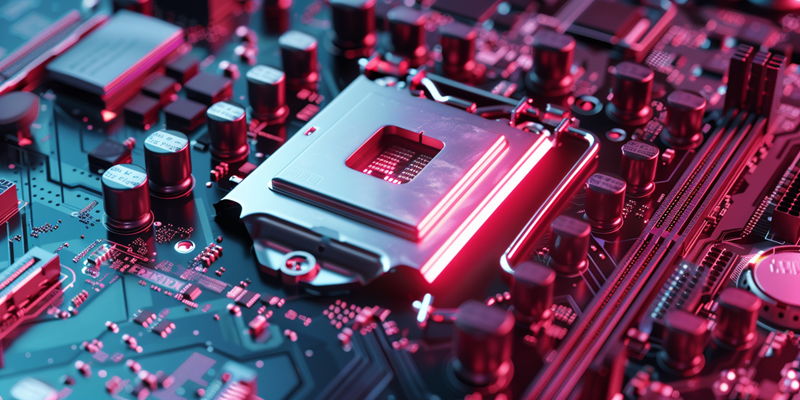The tech landscape is abuzz with excitement following AMD’s introduction of its latest CPUs based on the Zen 5 architecture. This revolutionary development is set to redefine the standards of computing power, thanks to significant enhancements, especially in core counts and L3 cache size. AMD has initially released two mobile variants of the Zen 5 CPUs and is poised to roll out four desktop versions shortly. Eventually, the Zen 5 architecture will also find its way into Epyc CPUs, catering to data centers. A revealing hardware leak has further fueled anticipation, showcasing substantial core increases in the standard Epyc CPU, from 96 to 128, aligning closely with the existing Bergamo Zen 4c CPUs, but with the standout feature of a dramatically boosted L3 cache from 384MB to a staggering 512MB.
Enhanced Core Counts and L3 Cache: A Deep Dive
Increased Core Counts and Configuration
AMD’s latest architectural advancements with Zen 5 have brought about a notable milestone in the Epyc CPU lineup. Notably, an AMD Epyc CPU, devoid of V-Cache, has achieved an unprecedented 1GB of L3 cache in a dual-socket system for the first time. This is a marked evolution from the Genoa-X CPUs that came equipped with 1.1GB of L3 cache. The implications are profound, suggesting that future iterations of the Epyc-X CPUs may potentially exceed these impressive figures. The zenith of AMD’s innovation lies in the new chiplet design, which has scaled up from eight cores to a remarkable sixteen cores per chiplet.
In the previous Genoa and Bergamo models, AMD maximized its core counts to 96 by using twelve chiplets, each housing eight cores. The new configuration strategy employed with Zen 5 allows for a streamlined approach where 128 cores are achieved using just eight 16-core chiplets. This strategic consolidation also integrates an additional 64MB of L3 cache per CCD (Core Complex Die), culminating in a total of 512MB. The impact of this architectural refinement extends beyond mere numbers—it signifies a quantum leap in computational efficiency and performance, positioning AMD as a formidable competitor in the high-stakes arena of server processors.
Competitive Dynamics and Industry Impact
The impressive advancements in AMD’s server processors are poised to exert significant competitive pressure on industry rival Intel. AMD’s strategic roadmap includes the upcoming Zen 5c variant, codenamed Turin, which could potentially amplify core counts up to a staggering 192, accompanied by 384 threads. This bold move represents a significant leap in processing power and threading capabilities, which are crucial for handling complex and data-intensive tasks prevalent in data centers today. In response, Intel has laid out its plans to counter AMD’s formidable trajectory with its own innovations.
Intel’s forthcoming Sierra Forest Xeon processors are designed to feature two 144-core E-Core chiplets, aggregating to a total of 288 cores without hyper-threading. This confrontation between AMD and Intel exemplifies the robust competitive dynamics that drive the CPU market forward. While Intel aims to keep pace with AMD’s core count escalation, the latter continues to sharpen its edge by reducing the number of chiplets required, thereby optimizing performance and minimizing latency. These developments underscore the intense rivalry and rapid technological advancements shaping the future of the CPU market.
Zen 5’s Strategic Positioning Against Intel
AMD’s Future Prospects and Strategic Prowess
The consensus within the tech community underscores AMD’s sustained competitive advantage, driven by its significant advancements in core counts and cache sizes. In the evolving landscape of data center CPUs, AMD’s reduced chiplet count and optimized performance metrics signal a compelling proposition for enterprise customers. By compressing the architectural complexity and pushing the envelope on performance, AMD’s Zen 5 stands out as a beacon of innovation in server chip technology. This strategic positioning against Intel is not just about matching core counts but about delivering superior computational efficiency and scalability.
The core reduction and L3 cache enhancements encapsulate AMD’s approach to maintaining a competitive market stance, providing users with high-performance systems that can cater to the burgeoning demands of modern data centers. This strategic foresight and technological prowess place AMD in a favorable position to capture more market share and set new benchmarks. Not only does this shift underscore the importance of innovative architecture designs, but it also reinforces AMD’s commitment to pushing the boundaries of what is possible in computing technology. As the CPU market continues to evolve, AMD’s advancements with Zen 5 provide a clear pathway for future developments and sustained market leadership.
Industry Implications and Forward-Looking Insights
AMD’s latest strides with Zen 5 have marked a significant milestone in the Epyc CPU series. Notably, an AMD Epyc CPU without V-Cache has, for the first time, achieved an impressive 1GB of L3 cache in a dual-socket system. This represents a progression from the Genoa-X CPUs, which featured 1.1GB of L3 cache. The implications are substantial, hinting that future Epyc-X CPUs could surpass these already impressive benchmarks.
The core of AMD’s innovation lies in the new chiplet architecture, which has evolved from eight cores per chiplet to an astonishing sixteen cores. In the previous Genoa and Bergamo models, AMD attained a 96-core count by utilizing twelve chiplets, each with eight cores. Under the Zen 5 architecture, AMD achieves 128 cores through just eight 16-core chiplets. This consolidation strategy also adds 64MB of L3 cache per CCD, totaling 512MB.
This architectural refinement not only boosts the numbers but also signifies a leap in computational efficiency and performance. Consequently, AMD solidifies its position as a formidable contender in the competitive server processor market.

